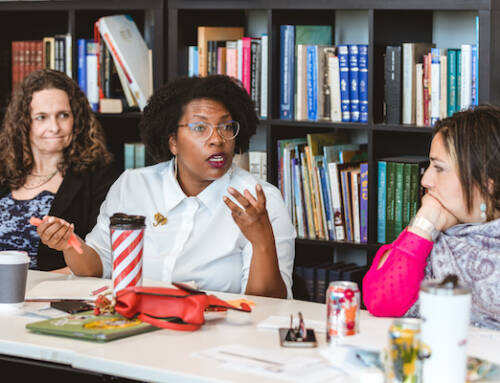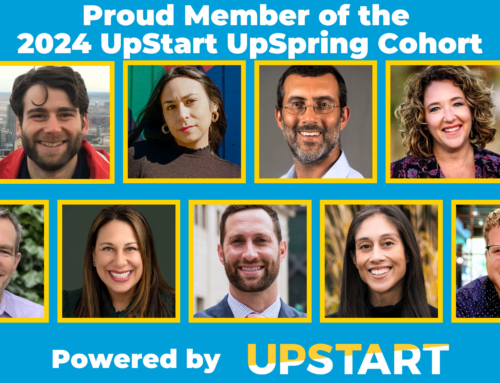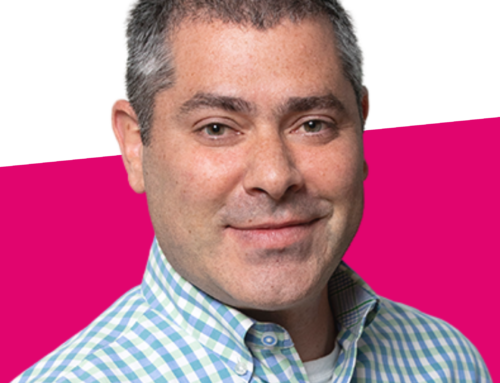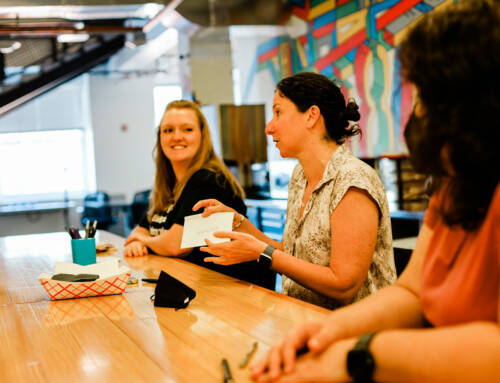Originally Published in PND by Candid on January 27, 2022.
By Sarah Gass, Noam Lindenbaum, & Emily Lezin.
Social entrepreneurs who apply to a program, fellowship, or funding opportunity are essentially raising their hands to say, “I have a vision for the future, and I want to take my best shot at making it a reality.” At UpStart, we support a network of entrepreneurial Jewish ventures and leaders—and we know that every decision we make on an application can have long-term implications for what our community looks like and who receives support in building it.
In October 2021, our friends at the Harvard Kennedy School of Social Innovation + Change Initiative (SICI) published “Transparent Gatekeeping: Part 2,” which sheds light on their application and selection processes in the (secular) social innovation space. Given UpStart’s role in shaping this space within the Jewish community, we wanted to take a page from SICI’s playbook and share the changes we’ve implemented in our own application and selection processes.
Our learning journey
As conveners of a network of Jewish social entrepreneurs, we take seriously our responsibility to not only level the playing field in selection and recruitment, but also develop what we call “equity-informed entrepreneurial leaders”—leaders with the capacity to acknowledge, account for, and disrupt systemic inequities as they build new Jewish initiatives. We’re sharing these changes in hopes that those in our network and beyond will be inspired to create more equitable application and selection processes.
Over the past two years, we have examined and improved these processes for two of our flagship programs, the Venture Accelerator and the Change Accelerator. This work has included changing the processes themselves, as well as while also developing our team’s and board’s capacity to drive more inclusive and equitable outcomes in everything we do. Working closely with Whitney Weathers, UpStart’s senior director of diversity, equity, inclusion, and justice (DEIJ), we listened carefully to feedback from previous participants and applicants and leveraged best practices from the wider equity field to reshape our processes. We identified significant barriers to applicants, including narrow outreach, unclear selection criteria, too little time to apply, and confusing jargon in the questions.
The Changes
“Evaluations, without standardization, are biased. Evaluators, without norming, are biased. By naming these biases, we affirm our commitment to consciously removing bias from our systems and processes.”
—Whitney Weathers
Here are some of the changes we applied to either one or both of our flagship programs:
We tackled bias head-on. We participated in several bias-reducing trainings and facilitated an internal, all-team “Anti-Bias Application Evaluation Training” to practice reviewing applications; made the language of each question as objective as possible, removing confusing jargon, figures of speech, and lingo; and standardized the review process so reviewers rely solely on evidence from the application or interview that demonstrated alignment with stated criteria.
We prioritized transparency for applicants. We shared the interview questions and selection criteria in advance; made clear which questions were optional and why we were asking those questions; and hosted information sessions in which potential applicants could learn more, ask questions, and connect with alumni, creating more visibility into our network and the program.
We increased accessibility in the process. We extended the submission window; reduced the number of questions in the application and the number of rounds in the process; encouraged applicants to request accommodations for applications, interviews, and webinars (and made those accommodations); and made curricular resources available to entrepreneurs who were not yet ready for the accelerator.
For the Change Accelerator, we also looked at ways to broaden our outreach by setting geographic goals, partnering with new networks, and enlisting our entire team to spread the word to more communities.
Learning From Change
Throughout this process, we began collecting data on the Change Accelerator program to see how these changes measured up and affected applicants. While several concurrent changes to the program make it difficult to determine causality, we’re seeing some positive signs in initial results and anecdotal evidence. For example, 35 percent of applicants for the 2022 Change Accelerator come from historically marginalized communities, and 30 percent of applicants come from small to midsize communities, where access to programming and support has historically been less available.
Even as we hear positive feedback from applicants about how accessible and easy the process was, we’ll continue to pivot based on additional feedback and learning, as well as another year of data. Already we have identified new initiatives to test in the future, like designing for screen reader compatibility.
We hope that by reflecting on our progress and sharing what we’ve learned, we can inspire change in the Jewish community and beyond. The leaders and ventures we work with are shaping our community for generations to come—it’s on us to make sure that when they bring their ideas forward, they’re met with a more even and transparent playing field. And knowing that this work is far from complete, we hope that others will share what they’ve learned so that we can keep growing.
Sarah Gass is director of the Entrepreneurs and Ventures program; Noam Lindenbaum is program operations associate in the Intrapreneurs and Institutions program; and Emily Lezin is program experience coordinator of the Entrepreneurs and Ventures program at UpStart.
Our purpose is to enable entrepreneurs to bring bold Jewish ideas to light. We help them reach Up to people in new ways that are meaningful, more inclusive, and create a brighter future for our Jewish community and the world we share.





